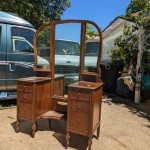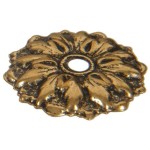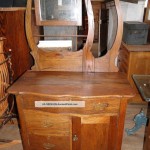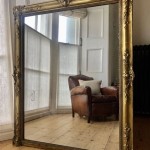How to Make Your Own DIY Mirror Frame
Creating a custom mirror frame offers a rewarding way to personalize living spaces and showcase individual style. This process allows for complete control over the frame’s design, material, and finish, ensuring a perfect complement to any mirror and room aesthetic. This guide will provide a comprehensive overview of creating a beautiful and functional DIY mirror frame.
Gathering Materials and Tools
Before embarking on the frame construction, assembling all necessary materials and tools is crucial for a smooth and efficient process. This preparation prevents interruptions and ensures the project progresses seamlessly.
Essential materials include:
- Mirror (with or without an existing frame)
- Frame material (wood, metal, plastic, etc.)
- Measuring tape
- Pencil
- Cutting tools (saw appropriate for the chosen frame material)
- Adhesive suitable for the frame material
- Finishing supplies (paint, stain, sealant)
- Hanging hardware
Essential tools include:
- Safety glasses
- Gloves
- Sandpaper
- Clamps (optional, but helpful)
- Drill (if using hanging hardware requiring screws)
Measuring and Cutting the Frame Material
Accurate measurement forms the foundation of a well-constructed frame. Precise measurements ensure the frame pieces fit together correctly and create a polished final product. It is essential to double-check all measurements before cutting.
The process entails measuring the mirror's dimensions precisely and adding the desired frame width to each side. This calculation determines the length of each frame piece. Mark these measurements clearly on the chosen frame material. Once marked, carefully cut the pieces using the appropriate saw, ensuring clean and accurate cuts to achieve professional-looking results.
Assembling the Frame
Assembling the frame requires careful alignment and secure adhesion. A well-assembled frame ensures stability and longevity, enhancing the overall quality of the finished piece.
Begin by arranging the cut frame pieces around the mirror, ensuring tight corners and even spacing. Apply the chosen adhesive to the joining edges of the frame pieces, following the manufacturer's instructions. Clamp the joined pieces together for the duration recommended by the adhesive instructions. This secures a strong bond and prevents shifting during the drying process.
Finishing the Frame
The finishing process provides an opportunity to personalize the frame and protect it from wear and tear. Selecting the right finish enhances the frame's aesthetic appeal and ensures its durability.
Once the adhesive has fully cured, remove the clamps. Sand any rough edges or imperfections on the frame surface for a smooth finish. Apply the chosen finish — paint, stain, or sealant — following the manufacturer's instructions. Multiple coats might be necessary for optimal coverage and protection. Allow adequate drying time between coats to ensure a professional-looking result.
Attaching the Mirror to the Frame
Securing the mirror within the frame requires a suitable adhesive and careful placement. Proper attachment guarantees the mirror's stability and prevents movement or damage.
Choose an adhesive specifically designed for mirrors and apply it to the back of the mirror, following the manufacturer's instructions. Carefully position the mirror within the frame, ensuring even spacing on all sides. Apply gentle pressure to secure the mirror in place. Allow the adhesive to cure completely before proceeding to the next step. This ensures a strong and lasting bond.
Installing Hanging Hardware
Installing appropriate hanging hardware facilitates secure and easy display of the finished mirror. Proper installation ensures the mirror hangs safely and remains level on the wall.
Select hanging hardware suitable for the weight and size of the mirror and frame. Following the hardware manufacturer's instructions, attach the hardware securely to the back of the frame. Ensure the hardware is positioned evenly to maintain balance when the mirror is hung. Carefully consider the placement of the hardware to guarantee the mirror hangs straight and at the desired height. Use a level to ensure accurate placement before finalizing the installation.
Choosing the Right Frame Material
The frame material significantly impacts the mirror's overall aesthetic. Careful selection ensures the frame complements the mirror and surrounding décor.
Wood offers a classic and versatile option, adaptable to various styles through different stains and finishes. Metal provides a sleek and modern look, while plastic offers lightweight and budget-friendly options. Consider the existing décor, the mirror's style, and personal preferences when selecting the frame material. This ensures a harmonious and visually appealing result.

20 Fantastic Diy Mirror Frame Ideas A Cultivated Nest
:max_bytes(150000):strip_icc()/bloomingdiyer-372b1cae2a6c43af917f3bea506c11da.jpg?strip=all)
20 Diy Mirror Frame Ideas To Inspire Your Next Project

Easy Diy Stick Framed Mirror That Looks Expensive
:max_bytes(150000):strip_icc()/alahome1-a879d69e31be4a9a9ae522028c12926d.jpg?strip=all)
20 Diy Mirror Frame Ideas To Inspire Your Next Project

30 Diy Mirror Frames Scratch And Stitch

Diy Mirror Frame Gold Dipped Pretty Providence

20 Easy Creative Diy Mirror Frame Ideas

30 Diy Mirror Frames Scratch And Stitch

30 Diy Mirror Frames Scratch And Stitch

20 Fantastic Diy Mirror Frame Ideas A Cultivated Nest








